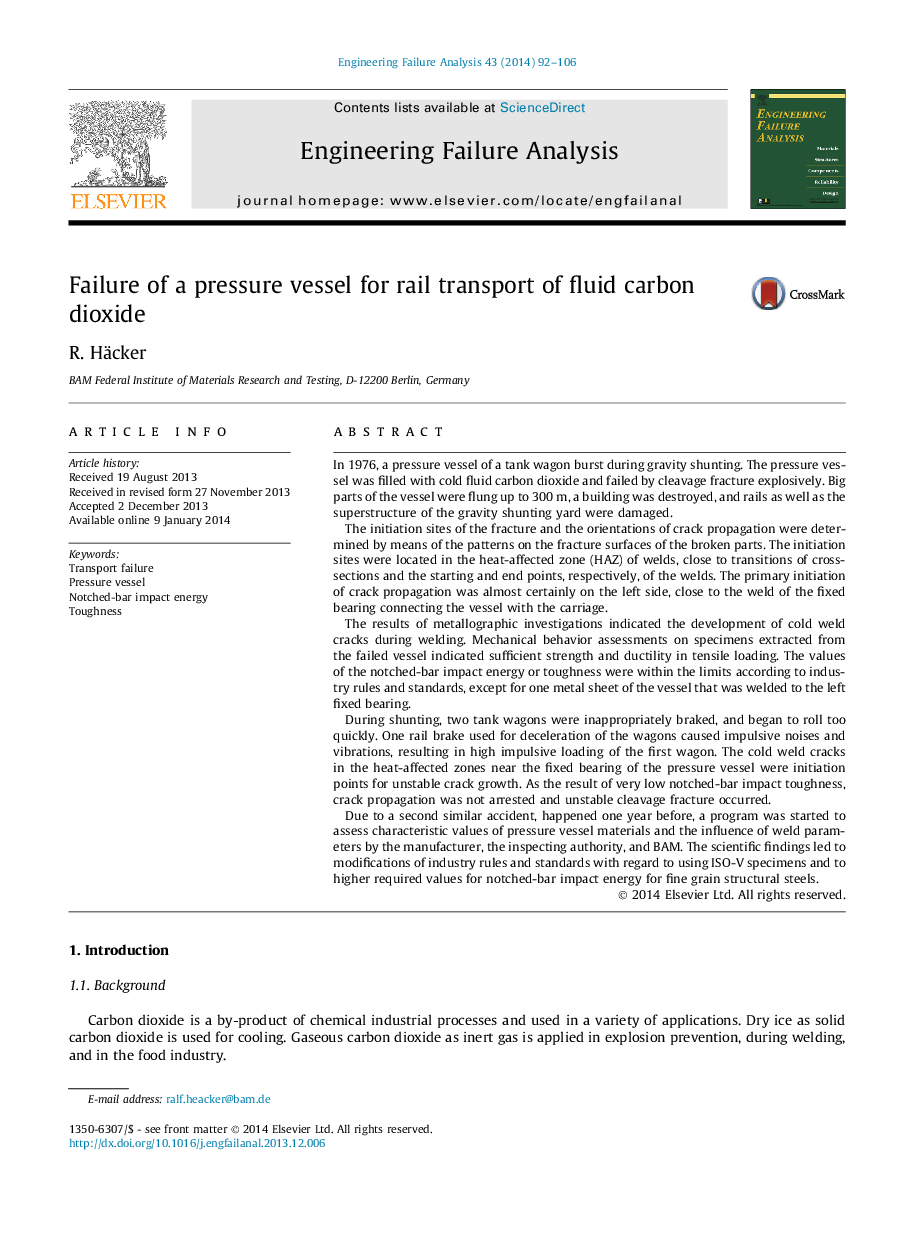| کد مقاله | کد نشریه | سال انتشار | مقاله انگلیسی | نسخه تمام متن |
|---|---|---|---|---|
| 773771 | 1462981 | 2014 | 15 صفحه PDF | دانلود رایگان |
• A transportable pressure vessel filled with liquefied carbon dioxide exploded.
• Crack initiation occurred in heat-affected zones of the weld.
• Cleavage fracture due to low toughness occurred, resulting in explosive failure.
• Modifications of existing industry standards.
• Increasing requirements for fine grain structural steel used at low temperatures.
In 1976, a pressure vessel of a tank wagon burst during gravity shunting. The pressure vessel was filled with cold fluid carbon dioxide and failed by cleavage fracture explosively. Big parts of the vessel were flung up to 300 m, a building was destroyed, and rails as well as the superstructure of the gravity shunting yard were damaged.The initiation sites of the fracture and the orientations of crack propagation were determined by means of the patterns on the fracture surfaces of the broken parts. The initiation sites were located in the heat-affected zone (HAZ) of welds, close to transitions of cross-sections and the starting and end points, respectively, of the welds. The primary initiation of crack propagation was almost certainly on the left side, close to the weld of the fixed bearing connecting the vessel with the carriage.The results of metallographic investigations indicated the development of cold weld cracks during welding. Mechanical behavior assessments on specimens extracted from the failed vessel indicated sufficient strength and ductility in tensile loading. The values of the notched-bar impact energy or toughness were within the limits according to industry rules and standards, except for one metal sheet of the vessel that was welded to the left fixed bearing.During shunting, two tank wagons were inappropriately braked, and began to roll too quickly. One rail brake used for deceleration of the wagons caused impulsive noises and vibrations, resulting in high impulsive loading of the first wagon. The cold weld cracks in the heat-affected zones near the fixed bearing of the pressure vessel were initiation points for unstable crack growth. As the result of very low notched-bar impact toughness, crack propagation was not arrested and unstable cleavage fracture occurred.Due to a second similar accident, happened one year before, a program was started to assess characteristic values of pressure vessel materials and the influence of weld parameters by the manufacturer, the inspecting authority, and BAM. The scientific findings led to modifications of industry rules and standards with regard to using ISO-V specimens and to higher required values for notched-bar impact energy for fine grain structural steels.
Journal: Engineering Failure Analysis - Volume 43, August 2014, Pages 92–106
